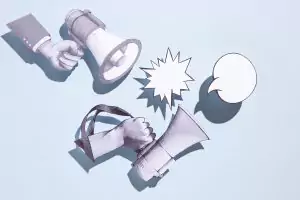
✅ AI Essay Writer ✅ AI Detector ✅ Plagchecker ✅ Paraphraser
✅ Summarizer ✅ Citation Generator
Hi everyone.
I’ve already posted tons of info on how to improve one’s writing quickly—mostly referring to stylistic and organizational techniques. Today, I’ve been retrospecting on some of my posts, and I was surprised to find out that I never dedicated one post to punctuation. This truly is an important and tricky part of writing. Hurrying to fix this injustice, I sketched out some quick tips that will teach you how to use specific punctuation marks correctly.
I ignored all the intricacies and nuances of English punctuation (which are so numerous, one could write a book about it); instead, I focused on the most common usages. So, let’s roll.
- Commas
- Semicolon
- Apostrophe
– Use them when you list items. For example, “I really like fruit: bananas, mangoes, kiwis, and other stuff like that.”
Commas connect two clauses that are related in meaning. “We can stay here and wait, or we can go and try searching for Stephany.”
– After introductory words or phrases, commas are most welcome.
– If you insert a phrase in the middle of a main clause, mark it with commas on both sides. “I could have called you, of course, but I didn’t want to.”
– The most common rule is to put a semicolon between two independent clauses. “Sue and I decided we need to go and at least try to find some help, but Sean and Jack preferred to wait; we never saw them again.”
– When listing something, and the items in the list are excessively long to separate them by simple commas, a semicolon is what you need. “I did everything for Mary: I paid for her crazy adventures and ruinous shopping tours; I helped all of her friends, and made them my friends as well; I was there to fulfill her tiniest wishes, even before she knew what she wanted herself. Whatever she wanted or needed, I made it happen.”
– Indicates possession. “Mark’s pen is better than mine.” For singular nouns, it’s ‘s, for plurals, s’.
– Indicates contraction, like “it’s” in the previous sentence. Don’t, ain’t, it’s, didn’t, and so on are also contractions.
This is it so far. See you next time with a new portion of quick punctuation tips. Good luck!
Follow us on Reddit for more insights and updates.




Comments (0)
Welcome to A*Help comments!
We’re all about debate and discussion at A*Help.
We value the diverse opinions of users, so you may find points of view that you don’t agree with. And that’s cool. However, there are certain things we’re not OK with: attempts to manipulate our data in any way, for example, or the posting of discriminative, offensive, hateful, or disparaging material.